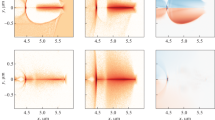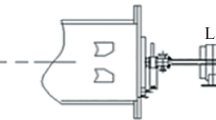Abstract
To realize the simulation experiments with the use of two ion beams at the injection complex of the BELA accelerator (Based on ECR ion source Linear Accelerator), it is necessary to determine the energy and irradiation angle of the beam of light ions which will be implanted into the region of radiation damage induced by heavy-ion beam. The depth of light-ion implantation is determined by the energy and kind of particles initiating the damage, as well as by their incidence angle. It is supposed that the incidence direction of heavy ions will coincide with the normal to the specimen surface. In our work, the necessary implantation zone for the iron ion beam with an energy of 3.2 MeV is located at depths of 300–800 nm. The simulation of the hydrogen and helium ion paths in the material of the iron target in the energy range from 150 to 600 keV at the angle to the normal from 0° to 65° is performed. The range of energies and irradiation angles for the hydrogen and helium ions are determined for the implantation into the radiation-induced defect-formation zone.
Similar content being viewed by others
References
R. S. Nelson, D. J. Mazey, and J. A. Hudson, J. Nucl. Mater. 37, 1 (1970).
Y. Serruys et al., C. R. Phys. 9, 437 (2008).
P. A. Fedin et al., J. Phys.: Conf. Ser. 1115, 032026 (2018).
S. L. Andrianov et al., Izv. Vyssh. Uchebn. Zaved., Fiz. 59 (9/3), 225 (2016) [in Russian].
S. V. Rogozhkin, et al., Yad. Fiz. Inzhin. 9, 245 (2018) [in Russian]
T. Kulevoy et al., in Proceedings of the LINAC’2018, p. 349.
G. G. Gulbekian, B. N. Gikal, V. V. Bekhterev, S. L. Bogomolov, A. A. Efremov, I. A. Ivanenko, N. Yu. Kazarinov, I. V. Kalagin, V. N. Melnikov, N. F. Osipov, S. V. Prokhorov, A. V. Tikhomirov, and M. V. Khabarov, Phys. Part. Nucl. Lett. 11, 763 (2014).
S. J. Zinkle and L. L. Snead, Scr. Mater. 143, 154 (2018).
A. V. Ziiatdinova, A. A. Nikitin, S. V. Rogozhkin, and T. V. Kulevoy, in Proceedings of the All-Russia Youth Conference on Research and Technological Development to Support the Development of New Generation Nuclear Technologies, 2018, p. 93 [in Russian].
Funding
This work was supported by the Russian Science Foundation under grant no. 17-19-01696.
Author information
Authors and Affiliations
Corresponding author
Ethics declarations
The authors declare that they have no conflicts of interest.
Additional information
Russian Text © The Author(s), 2019, published in Yadernaya Fizika i Inzhiniring, 2019, Vol. 10, No. 2.
Rights and permissions
About this article
Cite this article
Ziiatdinova, A.V., Fedin, P.A., Nikitin, A.A. et al. Simulation of Ion Paths in the Target Material for the Injection Complex of the BELA Facility. Phys. Atom. Nuclei 82, 1513–1518 (2019). https://doi.org/10.1134/S1063778819110218
Received:
Revised:
Accepted:
Published:
Issue Date:
DOI: https://doi.org/10.1134/S1063778819110218




